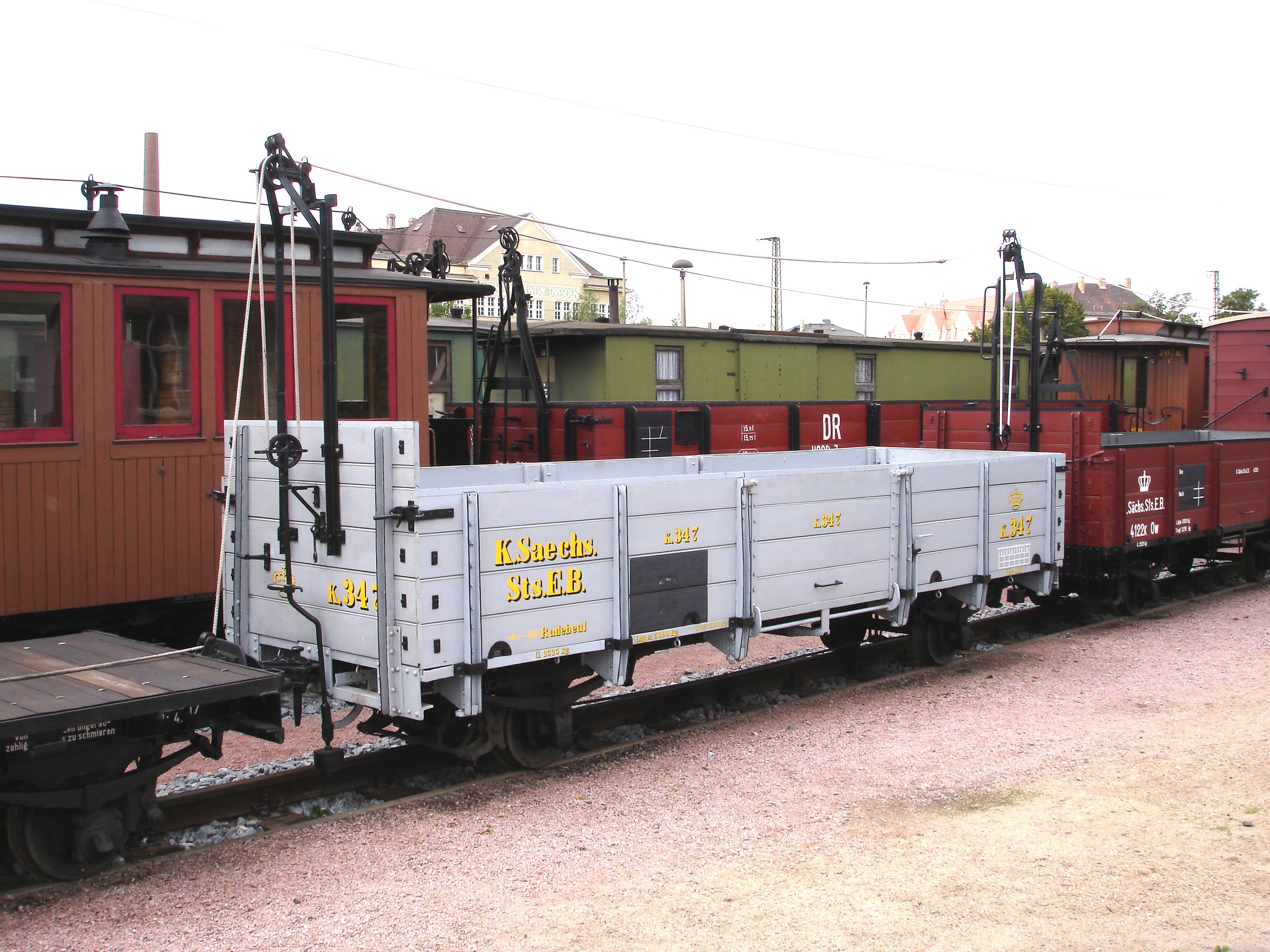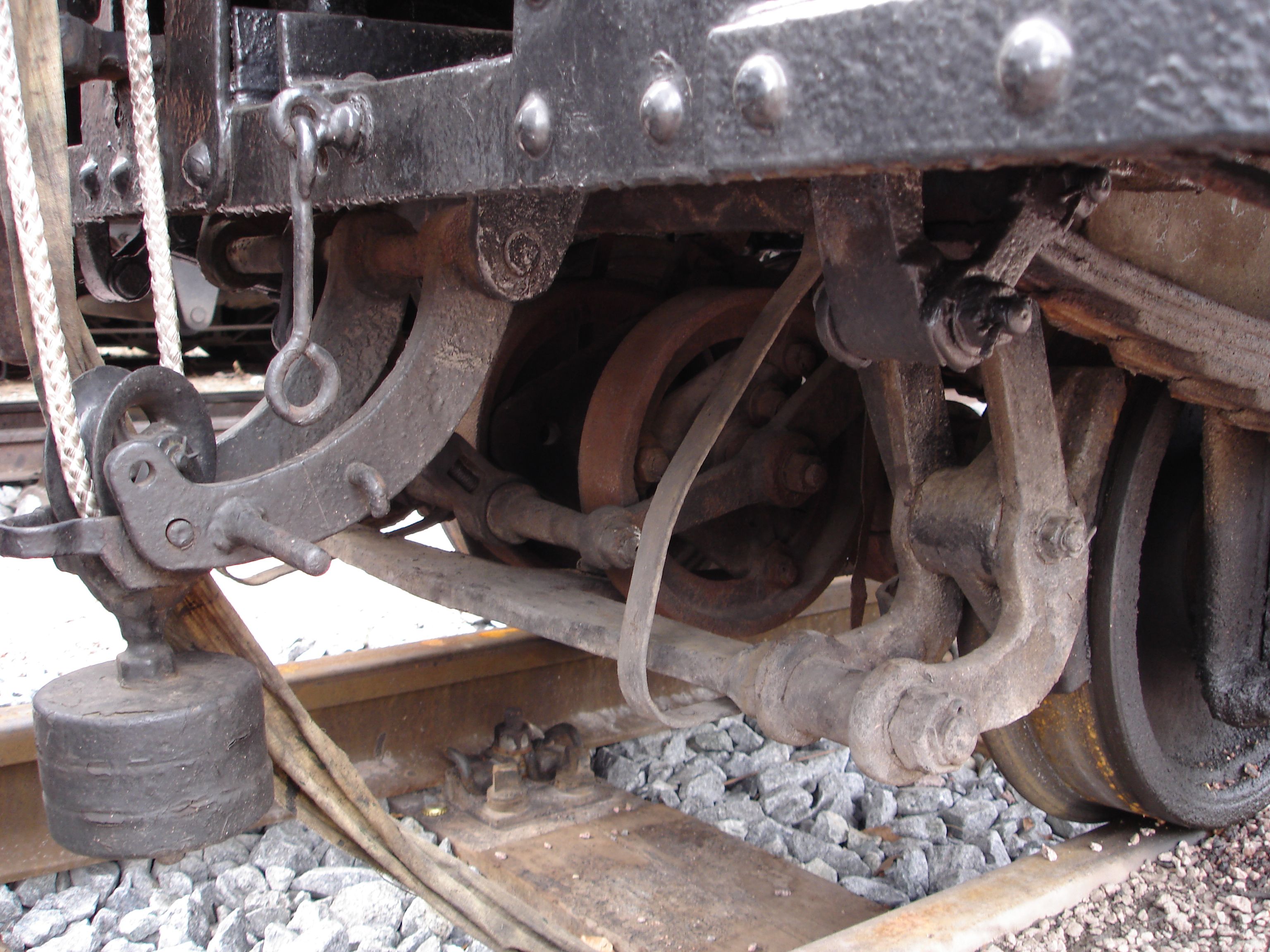Heberlein Brake on:
[Wikipedia]
[Google]
[Amazon]
 A Heberlein brake is a continuous
A Heberlein brake is a continuous

 The ''Heberlein'' brake is still permitted as an operating brake on German railways due to it being both continuous and automatic, and at the low speeds on narrow gauge lines this means it is perfectly safe.
On several narrow gauge railways in
The ''Heberlein'' brake is still permitted as an operating brake on German railways due to it being both continuous and automatic, and at the low speeds on narrow gauge lines this means it is perfectly safe.
On several narrow gauge railways in
 A Heberlein brake is a continuous
A Heberlein brake is a continuous railway brake
A railway brake is a type of brake used on the cars of railway trains to enable deceleration, control acceleration (downhill) or to keep them immobile when parked. While the basic principle is similar to that on road vehicle usage, operationa ...
used in Germany that is applied by means of a mechanical cable. Train braking is therefore initiated centrally from the locomotive
A locomotive is a rail transport, rail vehicle that provides the motive power for a train. Traditionally, locomotives pulled trains from the front. However, Push–pull train, push–pull operation has become common, and in the pursuit for ...
using a winder. This causes the brake clips to be applied on individual wagons, assisted by a servo
Servo may refer to:
Mechanisms
* Servomechanism, or servo, a device used to provide control of a desired operation through the use of feedback
** AI servo, an autofocus mode
** Electrohydraulic servo valve, an electrically operated valve that c ...
system which makes use of the rotation of the axle. The brakes operate automatically if the cable snaps. A typical feature of ''Heberlein'' brakes is the clearly visible cable run on top of the wagons, but cables can also be led underneath the wagons, as on the '' Spreewaldbahn'' railway line. ''Heberlein'' brakes were eventually largely replaced by compressed-air brakes
A railway air brake is a railway brake power braking system with compressed air as the operating medium. Modern trains rely upon a fail-safe air brake system that is based upon a design patented by George Westinghouse on April 13, 1869. The We ...
or, sometimes, by vacuum brakes
The vacuum brake is a braking system employed on trains and introduced in the mid-1860s. A variant, the automatic vacuum brake system, became almost universal in British train equipment and in countries influenced by British practice. Vacuum b ...
on narrow gauge
A narrow-gauge railway (narrow-gauge railroad in the US) is a railway with a track gauge (distance between the rails) narrower than . Most narrow-gauge railways are between and .
Since narrow-gauge railways are usually built with Minimum railw ...
railway vehicles.
Modern use

 The ''Heberlein'' brake is still permitted as an operating brake on German railways due to it being both continuous and automatic, and at the low speeds on narrow gauge lines this means it is perfectly safe.
On several narrow gauge railways in
The ''Heberlein'' brake is still permitted as an operating brake on German railways due to it being both continuous and automatic, and at the low speeds on narrow gauge lines this means it is perfectly safe.
On several narrow gauge railways in Saxony
Saxony, officially the Free State of Saxony, is a landlocked state of Germany, bordering the states of Brandenburg, Saxony-Anhalt, Thuringia, and Bavaria, as well as the countries of Poland and the Czech Republic. Its capital is Dresden, and ...
, numerous vehicles with ''Heberlein'' systems can still be seen. These include the '' Lößnitzgrundbahn'', '' Weißeritztalbahn'' and Rittersgrün
Rittersgrün is a district of the municipality of Breitenbrunn/Erzgeb., Breitenbrunn/Erzgeb in the Erzgebirgskreis in Saxony, Germany. The scattered settlement with around 1600 inhabitants grew up around several hammer mills, which operated on th ...
narrow gauge museum railway. On the ''Preßnitztalbahn
The Pressnitz Valley Railway (German: ''Preßnitztalbahn'') was a narrow gauge railway line in Saxony, Germany. It used to climb from Wolkenstein on the standard gauge Annaberg-Buchholz–Flöha railway through the valley of river Preßnitz (Cz ...
'' trains using ''Heberlein'' brakes run regularly, several times a year.
Operation
Because of the way they operate, there is a longer delay with ''Heberlein'' brakes before the brakes take effect when compared with compressed-air or vacuum brakes. As a result, locomotive and train crews have to be given appropriate training and experience when using this type of brake in practice.Similar brakes
Germany
The Görlitzcounterweight brake
A counterweight brake () is an early form of hand brake on railway tenders and tank locomotives.
By throwing a counterweight lever, play in the brake blocks is quickly taken up and braking action is initiated. Further movement of the lever incre ...
(''Görlitzer Gewichtsbremse''), a form of cable brake, operates in a similar way to the ''Heberlein'' brake, but differs markedly in its design details, as does the ''Schmid'' continuous spiral-toothed gear brake.
Great Britain
The chain brake, an early British railway brake, was similar to the Heberlein brake but used a chain, instead of a cable. An example was the Clark and Webb Chain Brake, developed by John Clark in the 1840s and improved upon by Francis William Webb in 1875. It was used by theLondon and North Western Railway
The London and North Western Railway (LNWR, L&NWR) was a British railway company between 1846 and 1922. In the late 19th century, the LNWR was the largest joint stock company in the world.
Dubbed the "Premier Line", the LNWR's main line connec ...
from 1877, with some remaining in service into the 1890s. Early versions were non-automatic and would not stop the train if a coupling broke, thus not fulfilling their promise of eliminating the need for a brake van
Brake van and guard's van are terms used mainly in the UK, Ireland, Australia and India for a Rolling stock, railway vehicle equipped with a hand brake which can be applied by the Conductor (transportation), guard. The equivalent North Americ ...
and guard
Guard or guards may refer to:
Professional occupations
* Bodyguard, who protects an individual from personal assault
* Crossing guard, who stops traffic so pedestrians can cross the street
* Lifeguard, who rescues people from drowning
* Prison gu ...
.
United States
The American chain brake, formally known as the "graduating car brake", was independently invented by Lucious Stebbins ofHartford, Connecticut
Hartford is the List of capitals in the United States, capital city of the U.S. state of Connecticut. The city, located in Hartford County, Connecticut, Hartford County, had a population of 121,054 as of the 2020 United States census, 2020 ce ...
in 1848, and by William Loughridge of Weverton, Maryland
Weverton is an unincorporated community hamlet located in the southern tip of Washington County, Maryland, United States, near the north shore of the Potomac River. Its population is about 500. Weverton is located at the intersection of MD Route ...
in 1855. Loughridge's design (sometimes known as the "Loughridge brake") would be in use by 1857 by the lines of Cincinnati, Hamilton and Dayton Railway (1846–1917)
The Cincinnati, Hamilton and Dayton Railway (CH&D) was a railroad based in the U.S. state of Ohio that existed between its incorporation on March 2, 1846, and its acquisition by the Baltimore and Ohio Railroad in December 1917. It was origina ...
and Mad River and Lake Erie Railroad
The Mad River and Lake Erie Railroad was the second railroad to be built and operated in the U.S. state of Ohio (the Erie and Kalamazoo Railroad was first, beginning operations in Toledo during the Toledo War in 1836). It was also the first rail ...
, while there are no records of adoption of Stebbins' design. In 1859, the Pennsylvania Railroad's (PRR's) adoption of Loughridge's brake would be publicized as making it the safest route possible, boosting sales for both Loughridge and the PRR. The PRR would continue using the brake into the 1870s, despite more uniform brakes being developed.
References